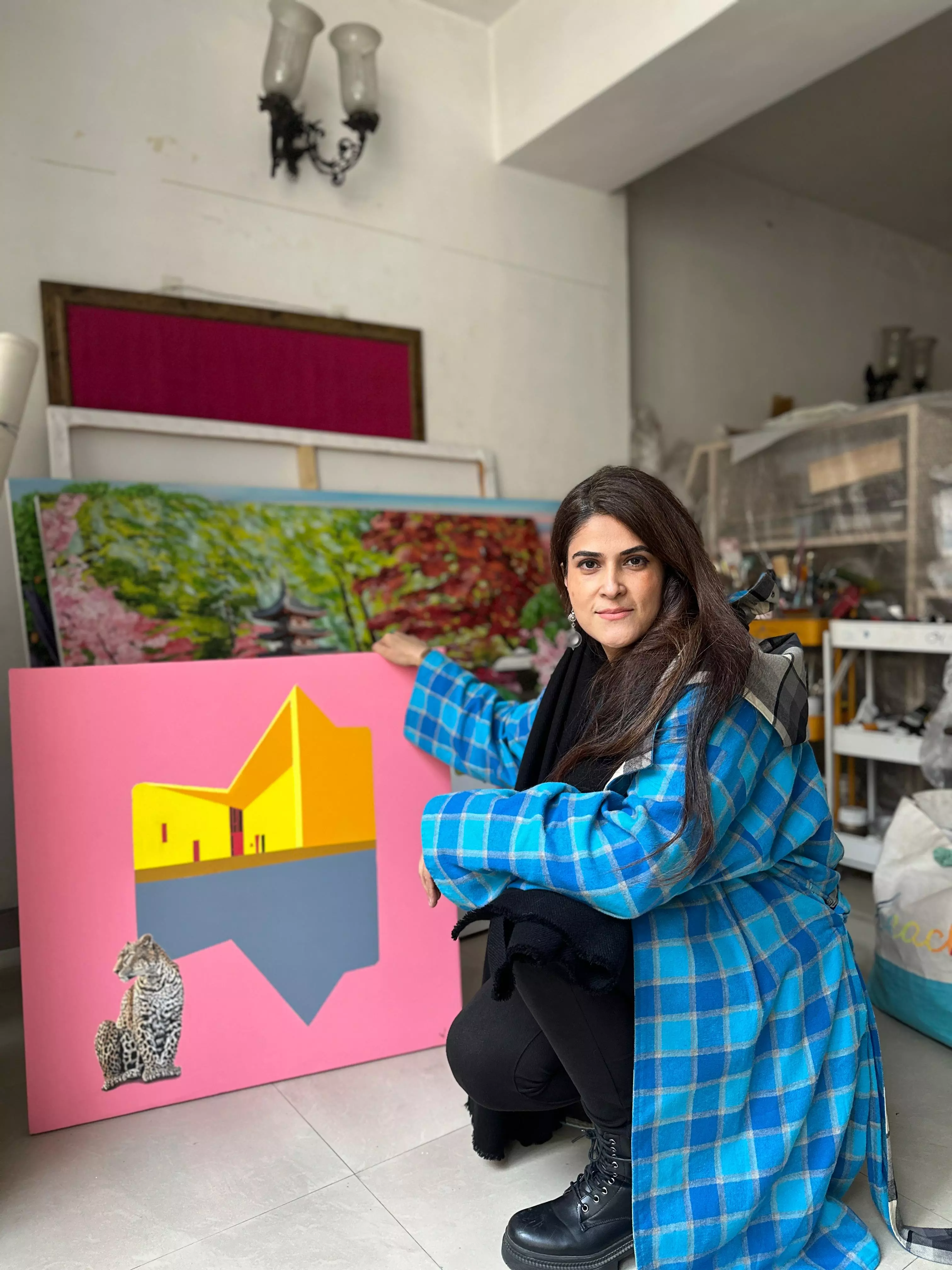Art Encourages People to Pause and Reflect: Aparneet Mann
Interview: Artist Aparneet Mann It’s a Jungle Out There

Aparneet Mann is an artist renowned for blending art with meaningful commentary on societal issues. In an exclusive conversation with Deccan Chronicle, Aparneet speaks about her recent exhibition “It’s a Jungle Out There”.
Excerpts
What inspired your use of animal imagery to explore urbanization in “It’s a Jungle Out There”?
“It’s Jungle Out There” is a playful yet sharp satire, using animal imagery to capture the wild chaos of city life. It pokes fun at how humans try to control and reshape both nature and urban spaces, exposing the absurdity of it all. The piece critiques urbanization and its toll on the environment but also highlights the beauty in the clash of old and new, natural and man-made. It’s a chaotic balance of destruction and hope, capturing the strange contradictions of modern life.
How can art effectively raise awareness about environmental issues like urbanization's impact on wildlife?
Art has a unique way of connecting with people that facts and data sometimes can’t. It taps into emotions and encourages people to pause and reflect on what’s going on around them, bringing attention to realities that might otherwise be ignored.
As artists, our tools are our canvas and brushstrokes. I try to create works that make people think about the other side of urbanization and how human actions are impacting ecosystems.Through my art, I want to inspire people to think about the consequences of our rapidly changing world and to reconsider the kind of development that could harm nature and all living beings—whether it's wildlife or us.
What message do you hope to convey through your depiction of Chandigarh's shifting ecological landscape?
Chandigarh is a city that beautifully mixes thoughtful urban design with natural beauty, and this blend has greatly inspired my work. Thanks to the vision of Swiss-French architect Le Corbusier, Chandigarh was built with wide streets, green spaces, and open areas, all surrounded by modernist buildings.
But over time, urbanization has slowly pushed nature and wildlife to the edges, making more room for concrete buildings and high-rises. Through my art, I aim to highlight how this once well-planned city has changed. This shift has become the focus of my Corbusier Series, which seeks to show how we've moved away from the original dream and vision Le Corbusier had for Chandigarh.
How does your "Divine Feminine" series empower women and challenge societal myths through art?
My Divine Feminine series reimagines women as spiritual forces, free from traditional societal limits. It challenges conventional ideas of femininity by portraying women as not just nurturers, but as protectors of nature and agents of change. The series celebrates the strength of women across ages, highlighting their individuality—from spirituality to playfulness and sexuality—transforming the feminine form into a powerful universal force. The vibrant colour palette adds a dream-like quality to an otherwise serious theme, with the works serving as light-hearted yet solemn depictions of the urban jungle and displaced habitats.
How do you balance urban life's brutal realities with spiritual elements in your artwork?
The landscape of fossils, a recurring theme in my work, acts as a time capsule that connects the past, present, and future. It symbolizes history and the transformative power of nature, which can refine or destroy all spaces. I balance this by blending the rawness of urbanization with the calm of spirituality, creating art that challenges viewers to reflect on the world. Through vibrant colors and symbolism, I highlight modern life's struggles while offering a deeper, introspective view of human existence.
What conversations do you hope your exhibition sparks about urbanization and the environment?
I hope my exhibition sparks discussions on how urbanization affects the environment and displaces nature. I want viewers to reflect on the balance between development and preservation, and think about building a more sustainable future. Through surreal cityscapes and playful animal imagery, I aim to explore the chaos of modern consumerism while highlighting the resilience of the feminine spirit. My work is both a satire and a call for awareness—reminding us of what we’re losing and what we need to reclaim. “It’s a Jungle Out There” is more than just an exhibition; it is a call to awareness and reflection.
How does your artistic process explore the intersection of nature, culture, and human experience?
Through symbolism and vibrant imagery, I explore how our connection to nature influences both culture and personal experience. My work examines the impact of urbanization, the balance between growth and preservation, and how our changing world affects nature and our lives. It’s about finding harmony between these forces and reflecting on how they shape our identity.

